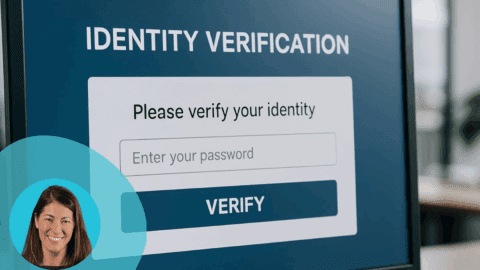 Consumer data represents an emerging market that could be valued at $7 billion, according to Greg Portell, Lead Partner in the Global Consumer and Retail Practice of A.T. Kearney. With data protection laws becoming a point of discussion in some states, retailers need to plan for how they will handle the coming shift in data ownership and use.
Consumer data represents an emerging market that could be valued at $7 billion, according to Greg Portell, Lead Partner in the Global Consumer and Retail Practice of A.T. Kearney. With data protection laws becoming a point of discussion in some states, retailers need to plan for how they will handle the coming shift in data ownership and use.
The future of data will be the focus of the Personalization: Elusive But Not Impossible session at Retail TouchPoints LIVE! @ RetailX, June 25-26 in Chicago. Portell will explain why technology and data alone aren’t enough to create true personalization — and how shoppers have become increasingly aware of the value of the data they produce.
In this exclusive Q&A, Portell offers a sneak peek at his session as well as his thoughts on what constitutes true, relevant personalization.
RTP: Your upcoming session at Retail TouchPoints Live @ RetailX notes that ‘true personalization’ still eludes retailers. What do you believe the industry needs to do in order to achieve this goal?
Greg Portell: At its foundation, it’s a shift in perspective. The simplest way to think about it is through traditional loyalty programs — they’re all about the consumer being loyal to the retailer, and what we’re advocating is a view that’s much more about the retailer being loyal to the consumer.
So how are retailers putting consumers and their needs at the nexus of the way they approach the market? Currently, the practice is still very much a retailer pushing messages to the consumer. If we’re really going to achieve true personalization, we need a message that is connected to and driven by the consumer.
RTP: Which best practices should retailers follow when harnessing collected data to ensure maximum impact of their personalization efforts? What pitfalls should retailers watch out for?
Portell: The best retailers are those that create a two-way street. It’s not just me pushing content to consumers, it’s consumers having an opportunity to share content and their perspective with me. Subsequent to that, it’s being able to act on that input.
It’s very disingenuous for me to say, ‘Tell me what’s really interesting to you,’ if I can’t then act on it. That’s really where most traditional retailers are challenged, because they’re built for a different purpose and a different era, and being able to execute on those types of programs consistently is difficult operationally.
RTP: What factors create the difference between authentic messaging and outreach that comes off as phony or self-serving?
Portell: Having a link to actual consumer data that can anticipate their needs is important. Being able to filter through noise versus true signals is important, as well. The understanding of what works for consumers is also very important.
If I buy a piece of jewelry for my wife, and the retailer is actually trying to find styles and dimensions and accessories that complement my choice, that’s a high level of authenticity. If they’re just using my information to send me an email every day for something I might need, then that’s different. That’s a very self-serving, push type of engagement, and it’s difficult to call that personalization.
There are the retailers out there that send you the email blast every day, whether you’re in the market and have a need or not. That’s very phony and self-serving — it’s not personalized. It may still be an effective marketing strategy, but it’s not and shouldn’t be claimed to be personal just because it’s a somewhat customized email.
RTP: Consumers are increasingly aware of the value of their data. How do you expect this to change the relationship between shoppers and retailers? Are there any scenarios where it could help retailers — say that if people are getting something for their data, they may be more likely to share it and/or be more candid?
Portell: This is actually where a big emphasis of my presentation will be. The average consumer’s data is worth about $1,000 a year in the U.S., and they receive a fraction of that, typically in the form of discounts and free content. We believe that there’s a market emerging for validated consumer data where consumers can openly monetize their data.
A key part of that comes down to the accuracy of the information. Right now retailers are in a world where they’re looking at 10 or 12 different disparate data points and trying to come up with a view of a particular consumer. Well, as data becomes more valuable, and as consumers have a better path to monetize it, retailers are going to be able to react to actual signals of demand, not inferred signals of demand.
What I mean by that is if a woman is walking down the street and she sees a pair of shoes she wants, she can take a picture of them and send that to a retailer and say, ‘I really love this shoe,’ and then the retailer can react and meet that need. This is as opposed to right now, where the retailer has to guess that the demand is there, and sometimes they’re right and sometimes they’re wrong.
We expect that as consumers move down the path of sharing more valid data, they’re going to expect better service, and retailers are going to have an obligation and an expectation of being more accurate in their predictions.
RTP: How can a commitment to transparency improve a retailer’s personalization efforts?
Portell: I think we’re at a point now where transparency has become the norm. The challenge now is that being transparent doesn’t mean you’re good, and consumers expect a certain level of accuracy from all the data you’re collecting.
It’s fine if you say you’re collecting this information, you have cookies on your web site, you’re tracking my purchases across these seven channels and you’re looking at the indicators that I’m sharing on social media — that’s great. That transparency is helpful, and well appreciated. But if you don’t use all that information, if you try to sell me a handbag that I don’t particularly care for or don’t realize that I’m not in the market for them, the personalization side of things fails.
The easiest way to think about the conflict is that if you’re running a direct marketing program, you run it to an NPV of zero, which makes your response rate 0.3% or 0.4%. Those are good response rates for most direct marketing programs. Well, if you’re thinking about it as a customer service experience, those response rates and accuracy rates need to be at 90% to 95%. All of a sudden, the concept of customer service and curation conflicts with direct marketing theory.
What retailers need to come to grips with is not only how they collect the information, but how they set the expectation of what’s going to happen with that data. That’s probably where you see the biggest improvement opportunity: making sure there is a consistency between those two elements.
RTP: What has been the impact so far of privacy regulations like GDPR on personalization efforts? What do you predict will be the impact in the future?
Portell: Right now GDPR has really had minimal impact on the retail world, because it’s fairly easy to get consumers to opt in, and since it mainly affects Europeans, it doesn’t really have a lot of impact in the U.S. The California laws and some of the other state laws that are moving forward will probably have a bigger impact on U.S. retailers, simply because they clarify the ownership of data.
You can read about how during the Sears bankruptcy, they talked about their consumer database as one of their best assets. Well, in the new world of data privacy and data regulation, that’s no longer theirs to own. The consumers own their own data now going forward, and the best a retailer can do is rent or borrow it. That will change the definition of ‘proprietary,’ and it will change the definition of the asset in a way that many retailers are still adjusting to. Data will still be a commodity, but it will be a commodity that is owned by someone else.













